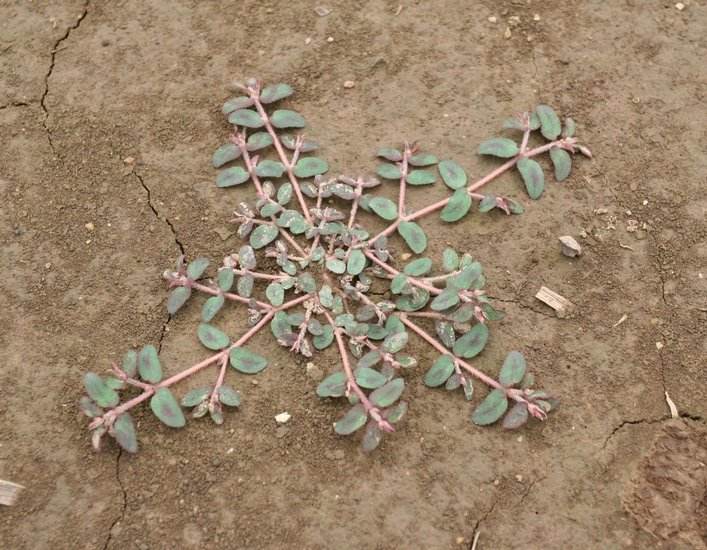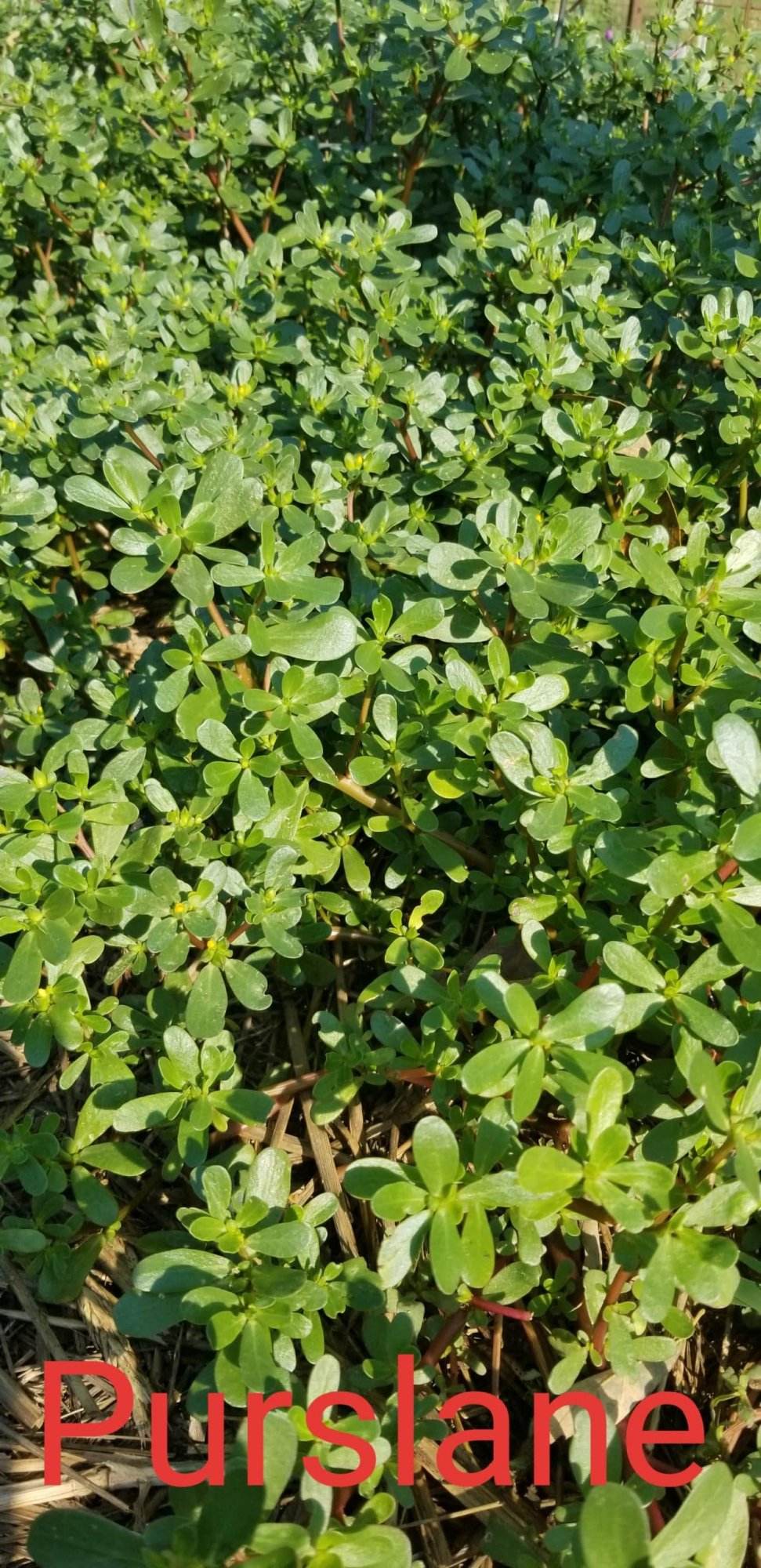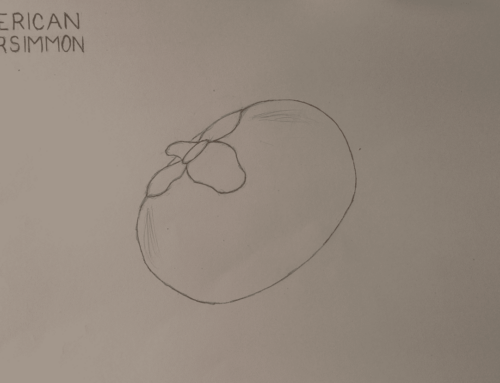Purslane! It’s another one of those “pesky weeds” that’s delicious and nutritious. It’s the highest herbal plant source of omegas 3, 6 and 9 fatty acids. Extremely rich in Vitamin C. It contains norepinephrine, making it great for allergies, thyroid, adrenal, and the entire endocrine system. It also makes a great poultice for burns. How could anyone get mad at it?
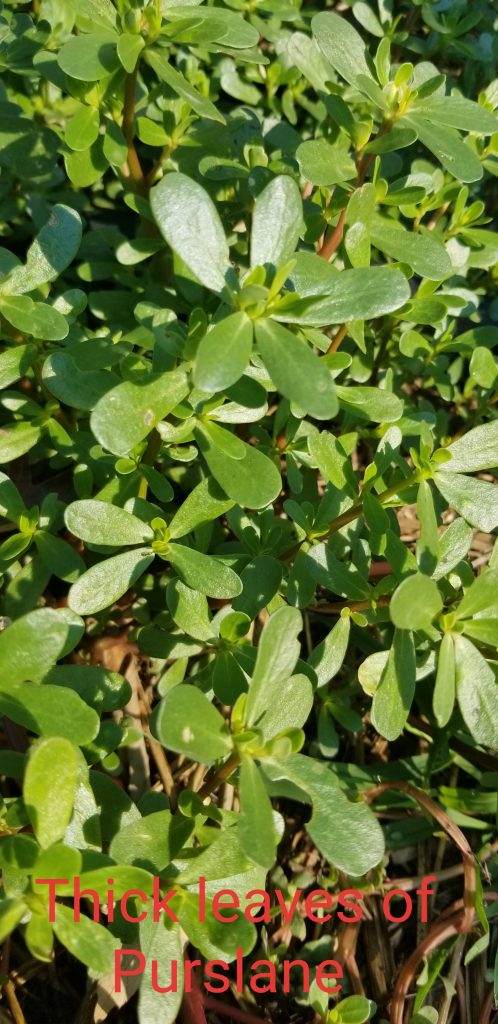
It is delicious raw, steamed, fried or cooked. The thickest stems can also be pickled using the recipe of pickled okra, or steamed and substituted for spaghetti noodles. We take the whole plant, lightly saute in butter, add salt and pepper, and walah! FREE, delicious greens with dinner. It also dehydrates well for a nutritional addition to winter soups and stir fry. When in abundance, I’ve been known to freeze in quart size bags for a quick addition to smoothies and soups.
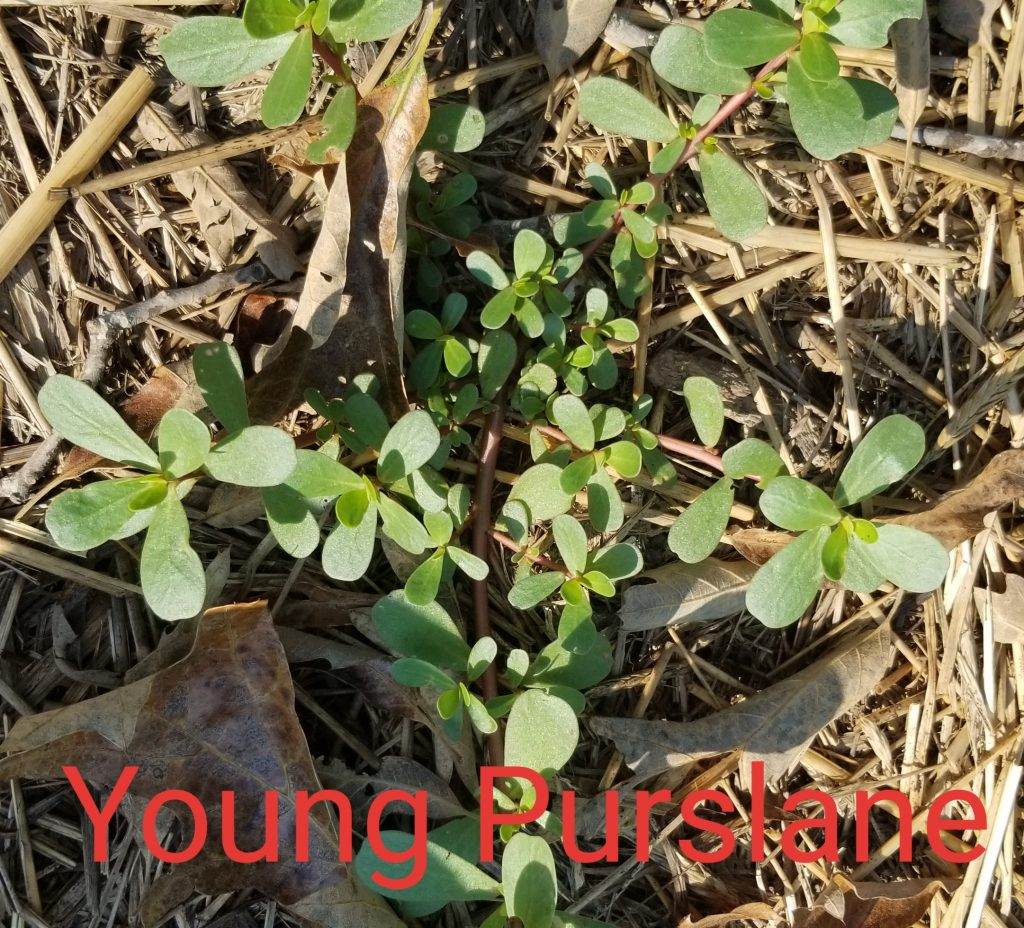
Here in Arkansas, purslane is often found thriving in the cracks of sidewalks and driveways during the peak of summer scorch. The tiny black seeds are prolific and will easily grow in containers, flowerbeds and just about anywhere else. Purslane will also reproduce from cuttings, making it very easy to propagate. It self seeds and needs little to no care whatsoever! It makes a great companion plant by providing ground cover to stabilize ground moisture. Its deep roots draw moisture and nutrients up to ensure better availability to other nearby plants.
When harvesting wild edibles, always be conscious of look-alikes. In this case, the toxic Spotted Spurge (Euphorbia maculata) shows up at the same time as Purslane and while they may look similar to the unexperienced, they are very easy to tell apart. Spotted Spurge stems always remain thin, never becoming as thick as a dime whereas Purslane stems can become thicker than a dime, with plump foliage and thick stems. The spurge’s stem always is a dark red while purslane stems very from green to purple, though are often “earthworm” pink/red. Spurge bleeds a white, latex sap but purslane’s sap is clear if it is seen at all. Spurge leaves remain small and flat and the plant spreads out like a thin carpet. Purslane leaves become thickly succulent and as large as the first joint of a pinkie finger and grow up to a foot tall. Purslane is edible, delicious and nutritious while Spotted Spurge is poisonous.
Prior to harvesting any wild plant, make sure they are growing in an area free of human interference. Pollution is widespread and you sure don’t want to consume or make medicine from contaminated plants. On your own property or in the woods, where you KNOW what has or hasn’t been applied is best. Stear clear from roadsides, commercial farmland and power lines, always.
So let’s start a new trend. Grow weeds not lawns!
Until next week, carpe diem! ~Amy
A purslane look-alike, Spotted Spurge
